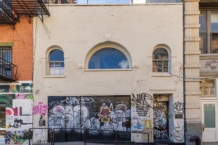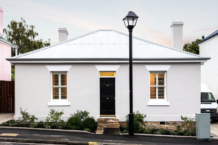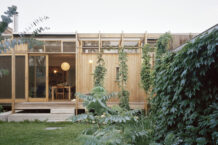Tales from the Agave Fields
Open Musings - by Nick Reid

If you don’t know by now, most ‘tequila’ sold in bars is a nasty blend of distilled alcohol and low-grade sugars, with only 51% agave. Genuine tequila is made from 100% blue agave, should be sipped and not shotted and has an enjoyable flavour. After meeting in Mexico and developing a love of pure agave based tequila, Australians Nick Reid, James Sherry and Canadian Eric Brass founded Tequila Tromba, with a mission to turn people from shots with lemon and salt to sipping and savouring the good stuff.
The team recently set off to Mexico, where they met the growers tending to their agave crop and visited the distillery in the idyllic highlands of Jalisco, Mexico. Co-founder Nick Reid shares a collection of anecdotes and pics from the trip.
The Distillery Tour
As both a thanks to the crew at our distillery up in Los Altos de Jalisco, and to introduce Tromba’s Canadian and Australian teams to the people at the source of our operation, we held a lunch at the distillery. Don Chava, one of the members of the distillery’s operations team and a taco stand owner in the nearby town of Arandas, provided a hearty lunch and Tromba Australia and Canada’s resident cantineros Matt Clarebrough and Robin Kauffman, who respectively shook up Tommy’s margaritas for the crew. I gave my speech thanking the distillery workers for their hard work and heckling other members of the team that couldn’t understand the speech in Spanish.
The Agave Fields
Before arriving at the distillery for the thank you lunch we were met at one of Marco’s friends agave fields by Pedro Infante, a member of the jimador team which normally cuts Tequila Tromba’s agave. After a demonstration by Pedro of the art of the jima (harvesting the agave plant with a tool called a coa) the Tromba Australia and Tromba Canada team’s picked up the coa and took an agave each. It took Pedro about 2 minutes to cut his agave from the ground and slice off the agave’s pencas , leaving a perfectly cut specimen lying on the ground, whereas as it took our team about 5 times as long to butcher each agave.
the watchful eye of Pedro Infante
Marco’s Masterclass
The day after the Canadian and Australian crew landed in Australia we were very lucky to be given a tequila masterclass by the great man, Marco Cedano. We parked ourselves in a cosy enclave of the famous La Tequila restaurant in Guadalajara at about midday, and after many hours of tequila discussion and training we finally emerged, heads spinning with agave knowledge and spirit… about seven hours later.
Don Javier
Jeremy Spencer, one of the owner’s of the West Winds Gin and a key player at Local Craft Spirits, accompanied the Tromba crew on their tour of the tequila valley territory. On a trip to the iconic town of tequila they stopped at the famous La Capilla bar, the birth place of Don Javier’s famous La Batanga cocktail. After a passionate conversation about the bartending profession Jeremy asked Don Javier if he could make him one of his famous coke and tequila cocktails. Don Javier response was for him to make it himself, and he sent Jeremy behind the bar to give him a lesson in the art of making the famous Batanga.
Sopes in the Street
After having discussed agave cultivation, tequila production, ageing and drinking for about 7 hours, we thought the only thing to do was to head into the old part of Guadalajara to sit at a traditional cantina and drink some more tequila. After about 4 hours of drinking tequila and micheladas and listening to wise old Mexicans discuss tequila, politics and soccer, we headed a couple of blocks away and sat down on some plastic tables in the street and tucked into a dinner of chicken and pork sopes. The sight of 9 Australian and Canadians sitting at plastic tables in the back streets of Guadalajara was a memorable one…
www.tequilatromba.com
By Nick Reid











